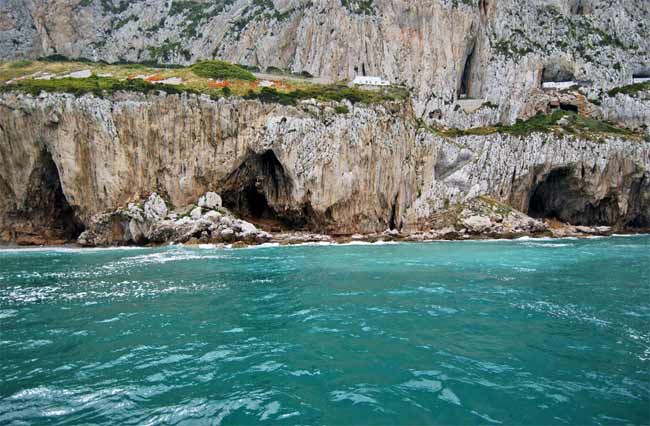Norse people eat seals and dolphins
According to a new study, prehistoric Neanderthal diets live in caves on Rock of Gibraltar including seal and dolphin meat. This information again shows that the Neanderthals have formidable skills that compete with the ancestors of modern humans living at the time.
The discovery of traces of seals, dolphins and fish in caves dating from 60,000 to 30,000 years ago provides the first evidence that Neanderthals eat both marine mammals and food on them. land.
Archaeologists have discovered mammal remnants in Vanguard and Gorham's cave Netherian families on the Rock of Gibraltar. The bones of some of the animals bearing traces were cut, probably because the Neanderthals used a stone knife to cut the flesh. The knives are also found here.
Until now scientists still wondered whether the Neanderthals could catch large mammals living in the variable because it was much harder than hunting terrestrial animals. The ancestors of modern humans lived in the same time as the Neanderthals also ate seafood. Some scientists believe that the skill of hunting large mammals living in the sea is our ancestral superiority compared to Neanderthals.

Rock cave on Rock of Gibraltar.From left to right is Bennett, Gorham, Vanguard.All three caves were once inhabited by Neanderthals.(Photo: Clive Finlayson, Gibraltar Museum)
Researcher Clive Finlayson of the Gibraltar Museum in Spain said: 'The view of the superior advantage implies that modern humans are superior in terms of experience thus defeating the Neanderthals. We have brought some obstacles to prove that Neanderthals also do what modern ancestors can. '
Researchers are unsure of how the ancient Neanderthals hunted marine animals, but they thought that perhaps they used batons to kill seals that approached the beach to give birth . This skill requires knowledge of seasons and predicting the breeding time of seals. Perhaps they also caught whales swimming too close to shore or those that were stranded on the beach.
The discovery of traces of cave-dwelling mammals dating from many different historical periods over 30,000 years has proven that the habit of eating marine-derived food is not just one The lucky thing, is the fact that repetitive action is practiced. There is no reason to think that this cannot happen in the Portuguese and Spanish coasts where the Neanderthals live.

The lower jaw of a Mediterranean monk seal in Vanguard cave.(Photo: Clive Finlayson, Gibraltar Museum)
Responding to LiveScience Finlayson said: 'Our preliminary findings indicate that in some cases the mammals they hunt are quite special. I think it's unbelievable if this only happens here. Perhaps people need to proceed to learn more about it. '
Modern people and Neanderthals live in Europe for about 10,000 to 20,000 years. However, they do not live together in Gibraltar or nearby areas. Modern people appear in this area about 3,000 to 4,000 years after the last Neanderthals are no longer here. The discovery of mammals living in the sea indicates that Neanderthals and modern humans have more in common than people once thought.
Finlayson said: 'This is not surprising to me because for years I have always thought that Neanderthals are misunderstood as an exceptional predator. This is exactly what I expected. We have always thought that Neanderthals are also intelligent and have similar skills as modern people. '
The study is published in the September 23 issue of the Proceedings of the National Academy of Sciences.
- Seals - 'warriors' against terrorism
- The secret to pre-existing natural danger of hat seals
- The secret to dive deep dolphins without fainting
- Seeing the mini version yourself, seals do surprises
- 7,000 Russian seals are in danger of being destroyed
- The seal seals down the cliff for fear of people
- Seals stray between forests in Sweden
- Seals of film production in the United States
- Beam of photos: The sunshine smile of a seal
- Extremely shocking studies of dolphins
- Unexpected truth about dolphins that few people know
- Strange image: Seals cut shark meat
 Discovered an ancient centipede fossil 99 million years old
Discovered an ancient centipede fossil 99 million years old Discovered bat-like dinosaurs in China
Discovered bat-like dinosaurs in China Discovered a 200-year-old bronze cannon of the coast
Discovered a 200-year-old bronze cannon of the coast Discover 305 million-year-old spider fossils
Discover 305 million-year-old spider fossils